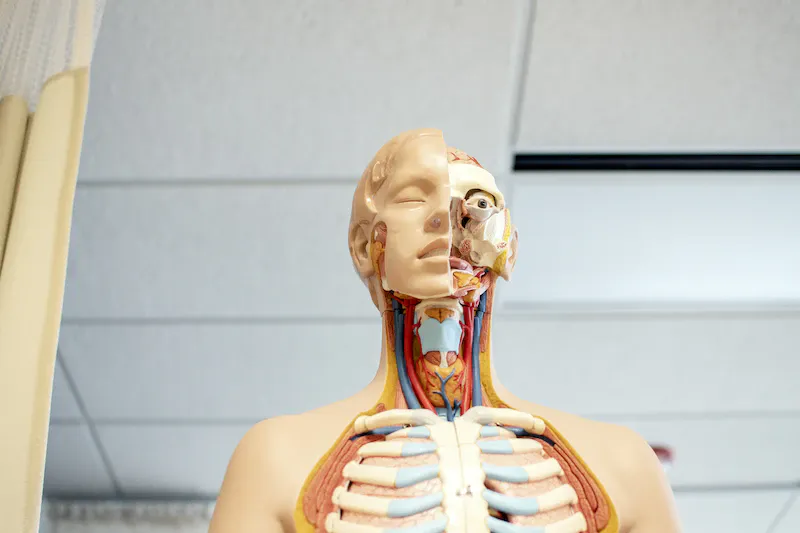Exploring the Importance of Studying Penile Anatomy.

Why Studying Anatomy Across Species is Important for Human Health
When I was studying to become a scientist, I was always amazed by the diversity of animal anatomy. It was fascinating to see how different species have evolved unique solutions to the same biological problems. As I started studying anatomy more in-depth, I realized that there is so much to learn by looking at the similarities and differences between different animals.
One of the biggest misconceptions about studying anatomy is that it is an esoteric and ivory tower activity. However, I believe that studying anatomy across species has direct implications for human health. By looking at how different animals’ tissues and organs work when everything is going right, we can gain insights into how to fix things when they go wrong.
In my work, I have found that even seemingly unrelated systems, such as invertebrate skeletons and mammalian reproductive systems, can provide valuable insights. By understanding how different systems work, we can find connections and new solutions to old problems.
For example, in my research on penile anatomy, I discovered a unique fiber arrangement in penile wall tissue that had never been seen before in nature. This discovery has important medical and engineering implications for understanding how changes in shape and stiffness are important for the proper functioning of erections.
Overall, I believe that studying anatomy across species is essential for advancing our understanding of human health. We need to take the time to apply ideas broadly between systems and see where it takes us. Who knows what other wild and productive connections are lurking out there, just waiting to be discovered.
The Wide Variety of Penile Structures Found in Animals
It may come as a surprise, but penises come in all shapes and sizes in the animal kingdom. From muscular tubes to modified fins, and even fleshy, inflatable cylinders, the diversity of penile structures in animals is truly remarkable.
As a comparative biologist, I have studied the anatomy of many different species of animals to understand how their tissues and organs work. While penises may seem like a topic of amusement, they are actually an important part of reproductive biology.
Penises transfer sperm from one individual to another during reproduction, and as internal fertilization evolved, penises often followed. By looking at the variety of penile structures across species, we can gain insights into how different animals have evolved to solve the same biological problem.
Interestingly, penises are not actually required for internal fertilization. However, they have evolved to be an effective solution to get sperm in position to meet up with eggs and form zygotes.
By studying the evolution of penile structures, we can also gain insights into the broader evolution of species. For example, penile spines have evolved independently in many different lineages of animals, suggesting that they provide an evolutionary advantage.
Overall, the diversity of penile structures in animals is a fascinating area of study that can provide valuable insights into reproductive biology and the evolution of species. While it may seem like an odd topic of research, studying penises across species can teach us a lot about the natural world and how different organisms have evolved to survive and reproduce.
From Dinosaur Paleontology to Penis Research
As a young undergraduate student, I was fascinated by dinosaur paleontology, and my initial forays into biological research were squarely in that realm. However, as I progressed in my academic career, I became interested in the study of biomechanics, specifically how skeletal systems function.
During my graduate studies, I was searching for a dissertation project that would expand our knowledge of skeletal function when I stumbled upon the mammalian penis. I found it to be an odd structure, given that it must change its mechanical behavior dramatically before it can be used for internal fertilization.
As I delved further into this research, I realized that the penis presented a problem that just cried out for a skeletal system to support it, one that could transmit forces and support tissues. My goal was to investigate the anatomy and function of penises, which would require studying the wall tissue’s role and mechanical behavior.
Initially, my adviser was skeptical of my project and warned me to be careful going down this path. However, I persevered, and my research ultimately led to a fascinating discovery. When the penis is functioning, it does not wiggle, and the wall tissue is an integral part of the penile skeleton, providing support that is necessary for an erection to occur.
This was an exciting breakthrough, as it not only shed light on the mechanics of the penis but also had obvious medical applications in humans. Furthermore, it highlighted the importance of broadening our study of anatomy across species, as seemingly disparate topics such as dinosaur paleontology and penis research can provide invaluable insights into one another.
The crucial role of skeletal systems in supporting tissue and transmitting forces
As a comparative biologist who studies anatomy, I’ve always been fascinated by the mechanisms that enable different species to function in their environments. One aspect that particularly intrigues me is the role of skeletal systems in supporting tissue and transmitting forces.
In many animals, including humans, a skeleton is any system that supports tissue and transmits forces. It’s not just about having a set of bones; there are a variety of ways in which animals have evolved to create skeletal systems. For example, some animals, like earthworms, use a hydrostatic skeleton to support their tissues. This type of skeleton involves the interaction between a pressurized fluid and the surrounding tissue, reinforced with fibrous proteins.
When it comes to penises, it turns out that they too have a unique skeletal system. Before a penis can be used for internal fertilization, it has to undergo a dramatic transformation in its mechanical behavior. Most of the time, it is a flexible organ that is easy to bend. But when it’s time for copulation, it must become rigid and difficult to bend. This is where the penis’s skeletal system comes in.
As a scientist, I’m always interested in understanding how different parts of the body work, and the role that skeletal systems play in supporting and transmitting forces is crucial to this understanding. By studying the anatomy and function of skeletal systems across species, we can gain insights that have direct implications for human health, as well as broader applications in fields like prosthetics and soft robotics.
The Similarities Between Penises and Hydrostatic Skeletons
Did you know that there are similarities between the structure of a penis and the hydrostatic skeletons found in certain species? Hydrostatic skeletons are structures that rely on fluid pressure to maintain their shape and allow for movement. Invertebrates such as worms and jellyfish are known for having hydrostatic skeletons, and they are also found in some soft-bodied marine animals.
The structure of a penis also relies on hydrostatic pressure to function properly. The penis contains three cylindrical tubes of tissue that fill with blood when a male becomes aroused. This increased blood flow causes the penis to become stiff and erect, allowing for sexual intercourse.
In both hydrostatic skeletons and penises, the ability to maintain pressure and shape is crucial for proper function. Understanding the mechanics of hydrostatic pressure in the context of penises has led to advancements in treatments for erectile dysfunction and other sexual health issues. Additionally, studying hydrostatic skeletons in other animals can provide insights into the evolution of these structures and how they have adapted to various environments.
Overall, the study of both penises and hydrostatic skeletons demonstrates the importance of interdisciplinary research in biology. By exploring seemingly unrelated topics, researchers can make unexpected connections and gain a deeper understanding of the complexities of the natural world.
The Discovery of a Unique Fiber Arrangement in Penile Wall Tissue
Studying the anatomy of animals can often lead to surprising discoveries that have important implications for human health. In the case of penises, researchers studying the anatomy of various animals, including whales, discovered a unique fiber arrangement in the wall tissue of their penises. This fiber arrangement, which had not been seen before, helps the penis to maintain its shape during erection and allows for greater flexibility during intercourse.
The discovery of this unique fiber arrangement has important implications for human health. For example, it could help researchers design better medical devices and treatments for erectile dysfunction. Additionally, it could lead to a better understanding of the causes of certain diseases, such as Peyronie’s disease, which affects the connective tissue in the penis and can lead to painful erections and other complications.
Overall, this discovery highlights the importance of studying anatomy across species, as it can often lead to unexpected and important discoveries that have the potential to improve human health and wellbeing.
The medical and engineering implications of understanding penile anatomy
Understanding the anatomy of different species, including the penis, is not just interesting from a scientific perspective, but it can also have important implications for medical and engineering fields. For example, knowing the structure of the penis and the mechanics of its function can help in the development of new treatments for erectile dysfunction and other related conditions. Additionally, the study of penile anatomy can contribute to the development of prosthetics and other devices for the treatment of male reproductive issues.
Furthermore, understanding the unique fiber arrangement in penile wall tissue can also have implications for the study of other types of tissue and muscle, including cardiac muscle. This can potentially lead to new developments in the treatment of heart disease and other related conditions.
In addition to the medical implications, studying penile anatomy can also have engineering applications. For example, the principles of hydrostatic skeletons found in many animals with penises can be applied in the design of soft robots and other flexible structures.
Overall, the study of penile anatomy is important not just for understanding the reproductive biology of different species, but also for its potential contributions to the medical and engineering fields.
The Potential for Discovering Connections Between Seemingly Unrelated Systems
As we delve deeper into the study of anatomy across species, we continue to reveal surprising similarities and connections between seemingly unrelated systems. The discovery of a unique fiber arrangement in penile wall tissue, for example, has opened up new avenues of research into how this tissue can be used to create more resilient and adaptable materials in engineering and medicine.
It is this potential for cross-disciplinary collaboration that makes studying anatomy across species so exciting. By looking beyond the boundaries of our own species, we can gain insights into the workings of the natural world that we might never have discovered otherwise. And as we continue to reveal these connections, who knows what kind of groundbreaking discoveries we might be able to make in the future?
Conclusion
Studying anatomy across species can reveal surprising similarities and differences in structures that may not have been previously understood. In the case of penile anatomy, research on various animal species has led to important discoveries that have implications for human health and engineering. The study of dinosaur paleontology, hydrostatic skeletons, and unique fiber arrangements in penile wall tissue are just a few examples of how seemingly unrelated systems can be connected in productive ways. By taking a multi-disciplinary approach to anatomy research, we can reveal new insights and develop innovative solutions to medical and engineering challenges.
